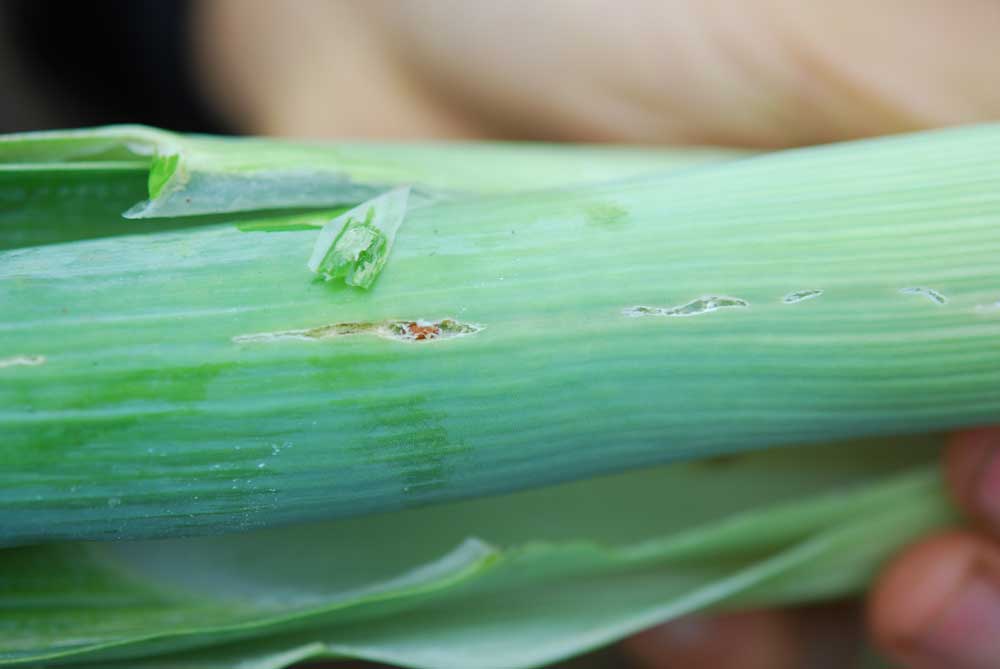Scientific name: Phytomyza gymnostoma
What Is It?
The onion leaf miner (or allium leaf miner) is a fly native to Europe that attacks plants in the Allium genus, which includes onions, garlic, leeks, chives, and more. The larvae chew the leaf tissue in a long trail down the plant, eventually forming a pupa at the end of the trail. Adults will puncture holes in a plant to feed on the sap that comes out. Infested plants curl and become distorted.
Is It Here Yet?
No. But they are in North America, having been found in Pennsylvania in 2015.
Why Should I Care?
The onion leaf miner’s feeding habits increase the risk of infections in a plant and make the plant unsightly. This results in financial losses for farmers.
How Can We Stop It?
Before transporting or importing species in the Allium genus, inspect the plants for signs of leaf miners or damage. Because the onion leaf miner isn’t in Washington yet, preventing its spread is key.
What Are Its Characteristics?
- Adults have yellow heads, knees, and sides of abdomens; otherwise mostly dark gray, just more than 1/10 inch long.
- Pupae are red-brown, slightly longer than adults.
- Larvae are white to yellow, up to about 1/3 inch long.
- Eggs are white, about 1/50 inch long, found on leaves.
- Adult feeding holes are in rows, with milky white sap coming out.
How Do I Distinguish It From Native Species?
While adults can be distinctive, the damage is most notable. Other fly maggots are pests of onions but are larger in size. The combination of damage and pupae are symptoms of concern and should be sent for proper diagnosis. Submit physical samples to your local Washington State University Cooperative Extension office.
Additional Photographs
Photos courtesy of Pennsylvania Department of Agriculture.



